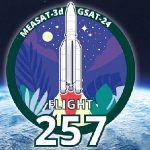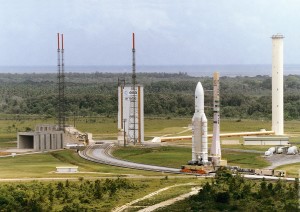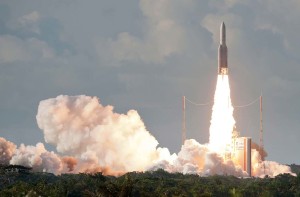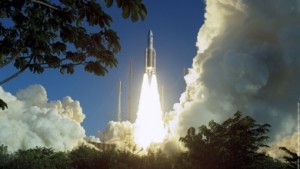The telescope is slated to arrive at its final destination, 1.5m kilometres from Earth, approximately 29 days after launch.
 Nasas next-generation space observatory, the James Webb Space Telescope, launched on December 25 from South America.
Nasas next-generation space observatory, the James Webb Space Telescope, launched on December 25 from South America.
The $10bn telescope is two decades in the making and will help answer questions about the solar system and look deeper into the universe in an unprecedented way.
On Saturday, an Ariane 5 rocket lifted off from the Guiana Space Center, Europes Spaceport in Kourou, French Guiana (South America), injecting the Webb Space Telescope, developed by NASA in partnership with ESA and the Canadian Space Agency (CSA), into its transfer orbit.
Europe played an important role in this mission, with ESA providing the launch onboard Ariane 5, as well as the Nirspec spectrometer built by Airbus. The astrophysics department of the Saclay-based CEA (French Alternative Energies and Atomic Energy Commission) and the Paris Observatory designed the MIRI camera. This is the most ambitious telescope ever sent into space.
Commenting on the launch, Stephane Israël, Chief Executive Officer of Arianespace, said: Todays launch is the mission of the decade, one that demonstrates the reliability of Arianespaces launch services in the eyes of the international space community. Its a great honour for us to have been chosen for this launch, which will enable humanity to take a giant step forward in its knowledge of the Universe. The mission demanded 20 years of preparation hand in hand with NASA. Its the third launch we have performed for the American space agency, clearly illustrating the advantage of large-scale international collaboration in space. I would like to thank ESA, NASA and CSA for entrusting us with their invaluable payload. To launch on Christmas morning 42 years after the takeoff of the first Ariane from this same Kourou site What a great end of year present for the space community gathered today for this launch. I would also like to thank the teams of Arianespace, ArianeGroup, CNES and ESA who worked without letup to ensure this success, all motivated by the same passion.
Intended as the successor to the Hubble Space Telescope, the Webb Space Telescope will be 100 times more powerful. It will incorporate improved and different technologies to capture 70% more light. The huge telescope will peer at the universe’s first stars and galaxies, sniff the atmospheres of nearby alien planets and perform a variety of other high-profile, high-impact work over the next five to 10 years, if all goes according to plan.
André-Hubert Roussel, CEO of ArianeGroup, added: This latest success is undoubtedly one of the most iconic space exploration launches performed by Ariane 5, following the Rosetta comet mission and Europes ATV resupply vessels for the International Space Station. Ariane 5 is known as the worlds most reliable launch vehicle, but, like everybody who contributed to the success of this mission, we were holding our breath when our launcher lifted off with this scientific jewel, one protected by a special fairing tailored for its sophisticated instruments. All previous launches also prepared this one, because we knew that the eyes of the world would be on us. There are just five more Ariane 5 launches scheduled before this legendary launcher bows out. Everybody at ArianeGroup is fully committed to making Ariane 6, scheduled for a first launch from Kourou in 2022, Europe’s next great achievement in space. I would like to thank ESA, NASA and CSA for placing their trust in us, and also all of our Ariane 5 partners in Europe, who are surely as proud as I am today.













































































